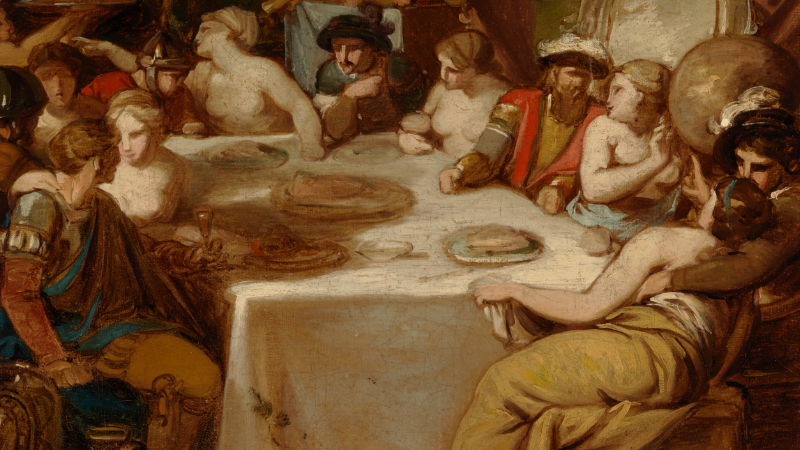In 2024, we celebrate the 500th anniversary of the birth of Luís de Camões (1524-1580), the greatest Portuguese poet, author of Os Lusíadas (The Lusiads). Inspired by Virgil’s Aeneid, Camões’ epic poem tells the history of Portugal from a mythical perspective, focusing on the discovery of a sea route to India by the Portuguese navigator Vasco da Gama.
Since the late 18th century, Camões and several themes from The Lusiads saw an increasing international diffusion, within the context of a pre-romanticist culture. The poet’s adventurous life itself became a literary and artistic motif. It was in this setting that Francisco Vieira Portuense created a series of compositions illustrating each of the poem’s ten Cantos (ten sections of the poem), for a projected grand edition of the work. That publication would never come to fruition, but at the beginning of 1817, a careful and profusely illustrated monumental edition of The Lusiads appeared in France, on the initiative of Morgado de Mateus.
During those same years, several Portuguese artists, all living abroad, decided almost simultaneously to dedicate celebratory works to Camões: in 1817, Domingos Bomtempo composed a Requiem Mass in memory of the poet, and Almeida Garrett’s long poem, Camões, was published in 1825. Coincidentally, at the 1824 Paris Salon, Domingos Sequeira exhibited the painting The Death of Camões, which he would eventually send to Rio de Janeiro as a present to the new emperor Pedro I of Brazil (Pedro IV of Portugal). This painting has since been lost, but a set of preparatory sketches still exists, evoking the poet’s last moments as he hears the terrible news of King Sebastião’s defeat at the battle of Ksar El Kebir. “At least I die with my Fatherland!”, he is said to have cried out.
This group of works marks the beginning of Romanticism in Portuguese art, committed to the celebration of national history and its heroes. And the Camonian themes, including that of the poet’s final moments, would continue to resonate and to be addressed throughout the 19th century, both by Portuguese and European artists.
Curators
Alexandra Markl
Raquel Henriques da Silva

